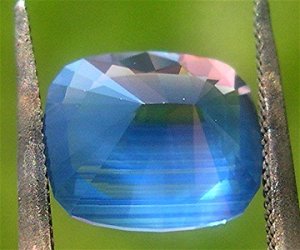haagen_dazs
Brilliant_Rock
- Joined
- Sep 2, 2009
- Messages
- 781
0.85 ct Sapphire
Hi all
I was just wondering if its normal for sapphires to have such a zoning? Is this even called zoning? The whole pavilion is blue and the crown region is colourless.
However the description says that the face up is all blue ("colouration complete") and actually looks pretty nice.
I normally do not use corundum cut in emerald shapes so this was interesting.
Hi all
I was just wondering if its normal for sapphires to have such a zoning? Is this even called zoning? The whole pavilion is blue and the crown region is colourless.
However the description says that the face up is all blue ("colouration complete") and actually looks pretty nice.
I normally do not use corundum cut in emerald shapes so this was interesting.






300x240.png)